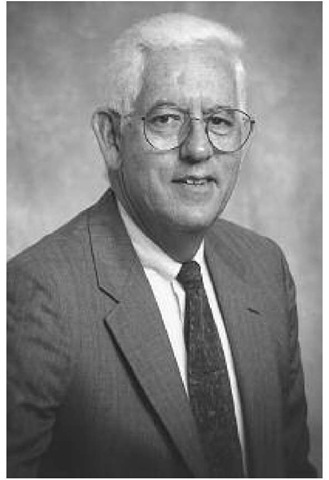(1940- ) American Regional Tectonics
After the plate tectonic paradigm was established during the late 1950s and 1960s, the second order of questions about how ancient continental areas fit into this paradigm became the next frontier in the 1970s and early 1980s. This research involved reevaluating previously mapped areas within this new context. The field can be classified as regional tectonics and many new methods for unraveling complex relationships developed. Certain areas became hot spots for regional tectonic study. One major area was the central and southern Appalachians primarily because of the oil and gas potential of the Valley and Ridge province along the western side. This period coincided with the oil crisis of the 1970s. Many no- table geologists and geophysicists participated in this evaluation, but without a doubt, Bob Hatcher was the leader. He is mainly interested in overthrust terranes, which are important to petroleum exploration. He established his leadership position by being the first to stick his neck out and propose an all-encompassing modern plate tectonic model for the entire southern Appalachian orogen. Every researcher thereafter had to address Hatcher’s model, whether they supported it or refuted it. He has modified and revised this model several times and published additional models.
Based on this willingness to take such well-calculated risks in a high-profile venue, Bob Hatcher became the person with whom to collaborate in the southern Appalachians. Although his research is strongly field based, Bob is well versed in many supporting techniques in geophysics and geochemistry so he could participate in many projects. When jack e. oliver’s group at Cornell University decided to produce their world-famous COCORP seismic reflection line (like a sonogram of the Earth) across the southern Appalachians, it was Bob Hatcher they contacted. That research proved that much of the southern Appalachians had been thrust faulted westward some 200 kilometers and there were possible hidden oil and gas reserves under the crystalline rocks as reported in the paper, “Thin Skinned Tectonics in the Crystalline Southern Appalachians; COCORP Reflection Profiling of the Blue Ridge and Piedmont.” When the concept of building orogens (and continents) with exotic pieces of crust from other parts of the Earth was born, the concept of suspect terranes, Bob Hatcher was coauthor of the definitive work with harold williams from Memorial University (e.g., Appalachian Suspect Terranes). When the significant strike-slip faulting was discovered, Hatcher was quick to bring it into context. He compiled a detailed geologic map in 1990 that succeeded the famous map of Harold Williams as the standard for the Appalachians (e.g., Tectonic
Portrait of Robert Hatcher
Map of the United States Appalachians). Another high-profile project that Hatcher spearheaded was the National Science Foundation Appalachian deep hole project (ADCOH) which was to be drilled through the Blue Ridge over-thrust and into the Valley and Ridge sedimentary rocks that are proposed to be hidden beneath. The project fell through in the end but the organization and work was outstanding and reported in the paper, “Appalachian Ultradeep Core Hole (ADCOH) Project Site Investigation Regional Seismic Lines and Geological Interpretation.”
Robert Dean Hatcher Jr. was born on October 22, 1940, in Madison, Tennessee. He attended Northwestern High School in Springfield, Ohio, and he graduated in 1957. He earned bachelor’s and master’s degrees from Vanderbilt University, Tennessee, in 1961 and 1962, respectively, with majors in geology and chemistry and a minor in mathematics. His Ph.D. was in structural geology from the University of Tennessee at Knoxville in 1965. He then worked as an exploration geologist for Exxon USA for one year before accepting a faculty position at Clemson University in 1966. He achieved the rank of professor and remained there until 1978 when he accepted a position at Florida State University. He moved again in 1980 to the University of South Carolina at Columbia. In 1986, he returned to his alma mater at the University of Tennessee at Knoxville, where he occupied an endowed chair at the University of Tennessee/Oak Ridge National Laboratories.
Bob Hatcher has authored or coauthored some 140 journal articles, five books and monographs, and numerous field guides. One of these books is a popular textbook entitled, Structural Geology, Principles, Concepts and Problems, and another is a companion lab manual. His service to the profession is unparalleled. He served as editor for the Geological Society of America Bulletin from 1984 to 1988. For this work, he was awarded the first-ever Geological Society of America Distinguished Service Award in 1988. He served as president of the Geological Society of America in 1993 and the American Geological Institute in 1996. He served as science adviser to South Carolina governor Richard Riley for disposal of radioactive waste from 1984 to 1986. His interest in nuclear waste disposal resulted in Hatcher’s serving a six-year term on the National Academy of the Sciences/National Research Council Board on radioactive waste management and a three-year term on the U.S. Nuclear Regulatory Commission nuclear reactor safety research review committee (1993-1996). Other awards include the 1997 I. C. White Award for his contributions to Appalachian geology and being made an honorary citizen of West Virginia in 1998 for the same reasons.

